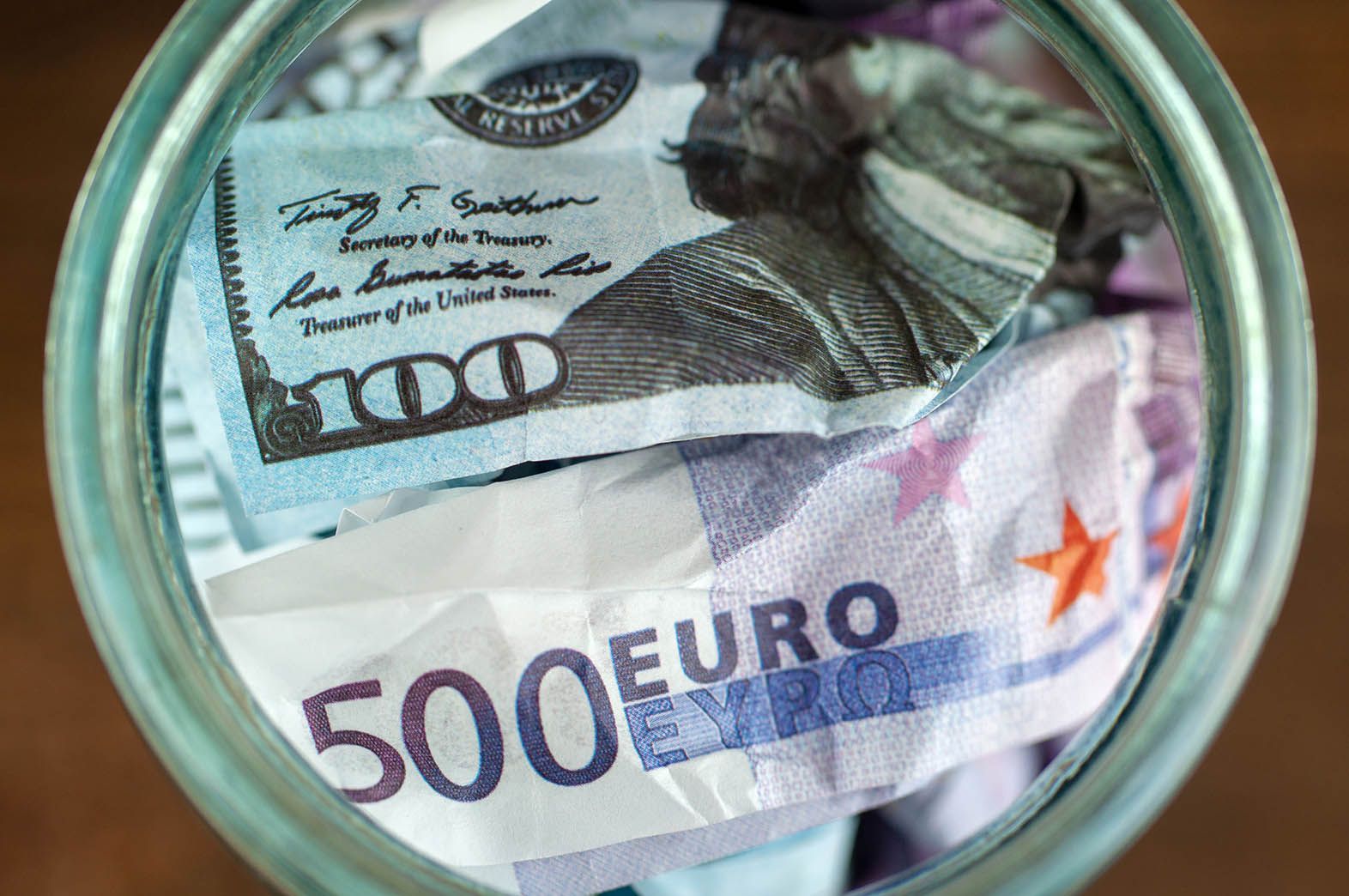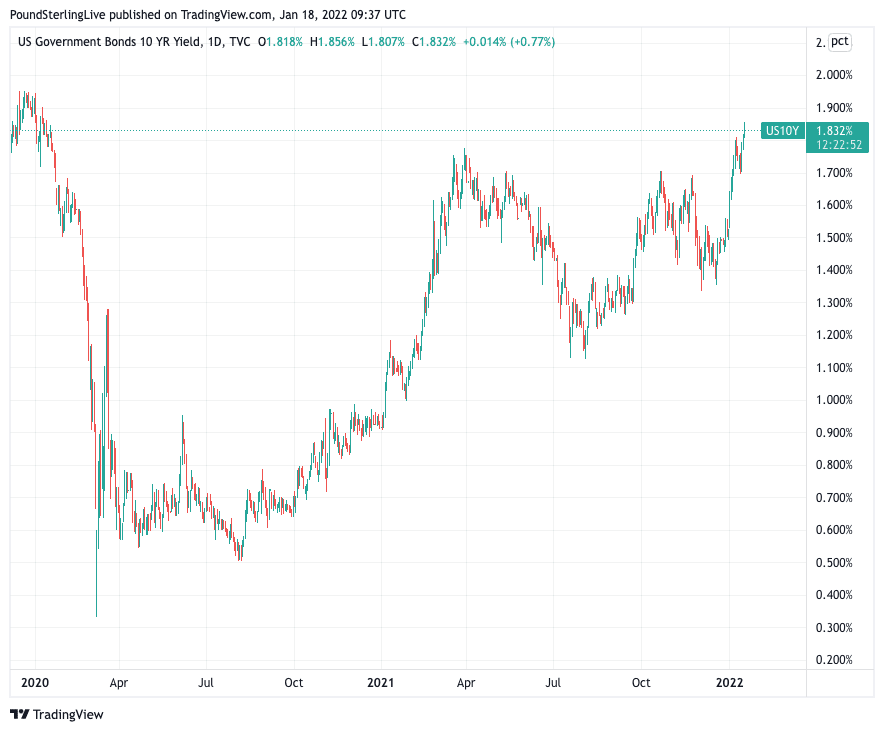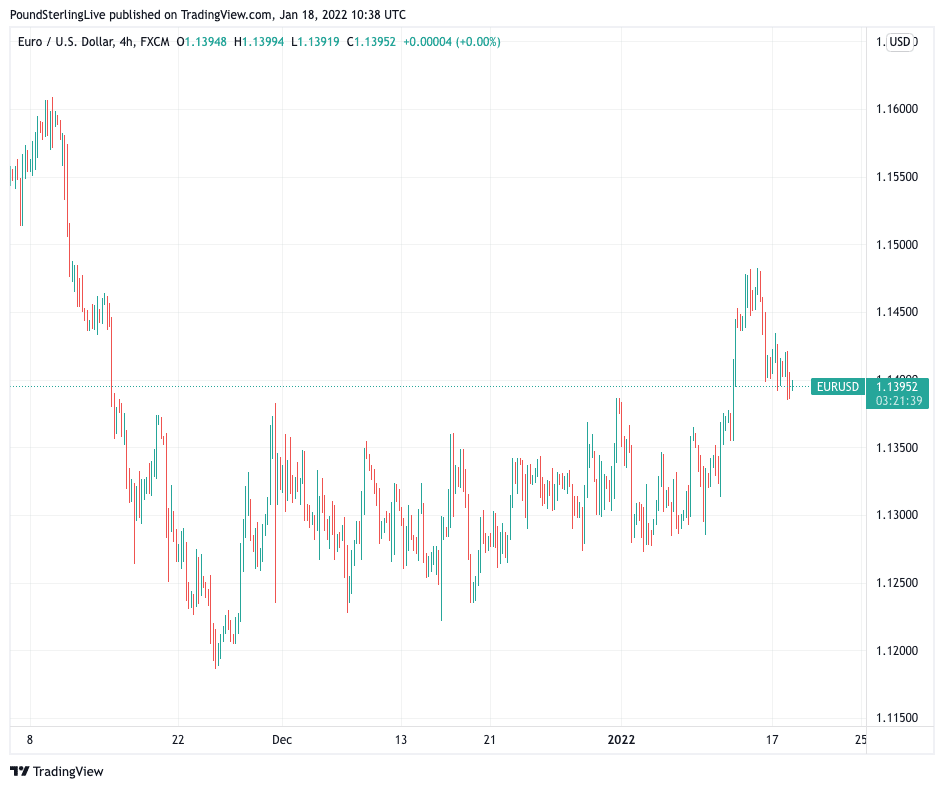Dollar a "Buy on the Dip" vs. Euro says Strategist
- Written by: Gary Howes

Image © Adobe Images
The Euro is in retreat against the U.S. Dollar once more having ramped higher in the first half of January and shoring up confidence amongst currency strategists who continue to anticipate Dollar outperformance over coming weeks and months.
The Dollar is a "buy on dips" with strategist Mark McCormick at TD Securities who says the currency's recent weakness is more a symptom of technical repositioning in the market than anything fundamental.
"We remain of the view that the USD is a buy on dips," says McCormick. "A re-entry sub-1.14 in EURUSD will put downside risks back into focus."
The Euro to Dollar exchange rate traded in a sideways pattern for much of December before breaking higher on January 12.
Above: Euro-Dollar at four-hour intervals.
- EUR/USD reference rates at publication:
Spot: 1.1425 - High street bank rates (indicative band): 1.1025-1.1105
- Payment specialist rates (indicative band): 1.1322-1.1368
- Find out more about market-beating rates and service, here
- Set up an exchange rate alert, here
Dollar weakness came despite members of the Federal Reserve guiding that interest rates could rise on four occasions in 2022 while warning the need to reverse quantitative easing later in the year was becoming acute given surging inflation levels.
All these are typically fundamentally supportive developments for the Dollar, which surprised analysts by falling even when it was revealed U.S. inflation printed at its highest level since 1982 in December.
"All the major core FX frameworks we follow for EUR/USD and GBP/USD pointed towards USD strength, but price action was completely not there," says McCormick opining the Dollar's recent performance.
"We are currently flat both EUR/USD and GBP/USD and are waiting for better levels before considering fresh shorts," he adds.
{wbamp-hide start}
{wbamp-hide end}{wbamp-show start}{wbamp-show end}
"The key driver remains interest rate differentials and this in turn suggests the dollar looks cheap. In particular, EUR-USD and GBP-USD look expensive compared to the recent shifts in 2Y yield differentials," says Daragh Maher, Head of Research, Americas, at HSBC.
Thomas Flury, a strategist at UBS, says the Euro might eventually appreciate again versus the Dollar, but several factors need to develop before this can happen.
He says global growth, driven by an emerging market rebound, would signal a fundamentally weaker environment for the Dollar.
Also, the European Central Bank must feel comfortable about hiking rates, something it is instinctively not comfortable with following years of promoting ultra-loose monetary conditions.
"Given the uncertainty about all this, we do not yet forecast a rebound of EUR.USD," says Flury.
UBS recently lowered their EUR/USD forecasts to 1.12 (down from 1.13), 1.10 (down from 1.12), 1.10 (down from 1.11) and 1.10 (unchanged) for each quarter-end period of 2022.
The Dollar entered 2022 amidst crowded positioning with investors and analysts alike positioning for further gains in the currency.
As can so often be the case with crowded trades, any counter move can drive a sizeable position unwind, which appears to have been a driver of recent Dollar weakness.
"Being long USD is already the consensus view amongst strategists on the street," says Bipan Rai, North America Head of FX Strategy at CIBC Capital Markets.
"Futures markets clearly highlight the degree of the greenback’s popularity with the net speculative skew in long positions over one standard deviation above the 3-year rolling average. Put simply, it isn’t as “cool” to be long USD these days judging by the conversations that we’ve had with clients," he adds.
But CIBC are committed Dollar bulls in 2022, saying the market is still pricing in too low of a terminal rate for the upcoming rate hike cycle at the Federal Reserve.
Furthermore, CIBC says the prospect of quantitative tightening at the Fed - whereby they reverse the effects of quantitative easing - are under-appreciated.
"This should be bearish for long-end US real rates, and supportive for the USD. In fact, we saw this happen during the last round of QT. The 10-year real yield rose from 25bps in the fall of 2017 to 117bps a year later. Over that same timeframe, the trade-weighted USD rose by over 7%," says Rai.
Typical Dollar dynamics appear to have reestablished this week with the U.S. currency rallying against most peers on January 18 in tandem with another push higher in U.S. yields.
"The small USD bounce in recent days perhaps reflects this return to conventionality," says HSBC's Maher.
The yield on U.S. ten-year government bonds reached their highest levels since January 2020 on Jan. 18, sending global stock markets lower and the Dollar higher.

Above: The yield paid on U.S. ten-year treasury bonds continues a steady march higher, signalling the end of pandemic-era 'easy money'.
Secure a retail exchange rate that is between 3-5% stronger than offered by leading banks, learn more.
The Euro to Dollar exchange rate pared recent advances to trade back at 1.1390, having been as high as 1.1480 just four days prior.
"Markets apparently turned lower on rising bond yields," says Neil Wilson, Chief Analyst at Markets.com. "The key thing to watch today as US traders return to their desks following the MLK holiday is whether the rout in bonds continues, or moderates."
Should U.S. bond yields continue to press higher the cost of financing dollar-denominated debt across the world will continue to rise, creating headwinds to a global economic recovery.
This would suit further gains by the U.S. currency while at the same time hobbling the Euro which would require a broader global recovery to facilitate a recovery.






